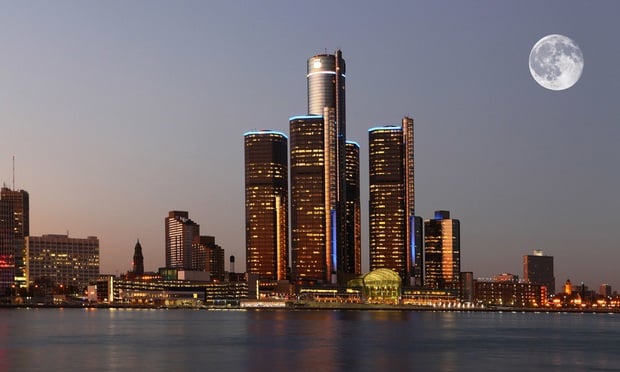(To read more on the industrial market, click here.)
DETROIT-According to the most recent Industrial Market Trends report released by the Southfield office of Grubb & Ellis Co., vacancy rates in Detroit's industrial sector held steady during the third quarter. However, as auto companies consolidate and shift gears in reaction to higher gas, material and health costs, upcoming quarters could hold opportunities for different product users.
The report indicates that manufacturers and distributors across a wide spectrum of industries shopped the market during the quarter. Activity in the Southeastern Oakland and Macomb counties came from auto-related companies leasing general industrial and manufacturing facilities. Leasing activity for warehouse/distribution space in Western Wayne County increased slightly, while in Southern Wayne County consistent demand, lower vacancies and a lack of new construction during the past several quarters prompted developers to break ground on several facilities.
Despite the favorable news, the study notes the state of the automotive industry could have ramifications for all. "As the bread and butter of the Metro Detroit area, the conditions of the manufacturing sector didn't paint an optimistic picture for the quarters ahead," says the report.
According to US Census Bureau, new orders for manufactured durable goods in September fell 2.1% to $4.4 billion, while the Metro Detroit automotive industry suffered substantial setbacks. During the quarter, Troy-based Delphi Corp., a major supplier to General Motors, was forced into bankruptcy as a result of increased cost of raw materials, lowered demand and increased health and labor costs. While most of Delphi's operations are based outside Metro Detroit, the area will likely see some impact via smaller tier-suppliers in the Metro area. Further impacting the industrial market, GM recently announced the closing of at least four area plants and the loss of 30,000 jobs company-wide.
Grubb predicts in the coming quarters that the biggest opportunities for developers and landlords will be in warehouse/distribution product. With nearly 1.2 million sf breaking ground, this product type offers a more cost effective option for development, "and a potential upswing in the non-automotive retail sector could bear fruit in the long run," states the report.
Manufacturing space users can see many opportunities in the form of cheaper occupancy cost due to a continued downturn in demand and increased supply in manufacturing facilities. "In the near term, given the uncertainties associated with the automotive industry, lease rates and sale prices may hold or decrease slightly," the study says. "However, further stagnation in the industry will ultimately have a greater impact on price."
Want to continue reading?
Become a Free ALM Digital Reader.
Once you are an ALM Digital Member, you’ll receive:
- Breaking commercial real estate news and analysis, on-site and via our newsletters and custom alerts
- Educational webcasts, white papers, and ebooks from industry thought leaders
- Critical coverage of the property casualty insurance and financial advisory markets on our other ALM sites, PropertyCasualty360 and ThinkAdvisor
Already have an account? Sign In Now
*May exclude premium content© 2024 ALM Global, LLC, All Rights Reserved. Request academic re-use from www.copyright.com. All other uses, submit a request to [email protected]. For more information visit Asset & Logo Licensing.






